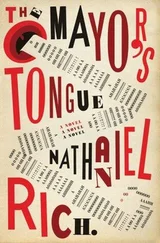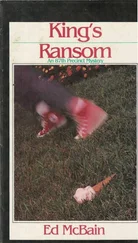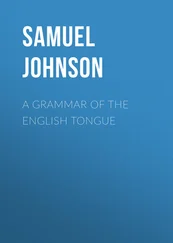I TELL HER THE FABLE of the tettorwort—you put it by the head of a sick person. If he’s going to get better he’ll shed tears and if he’s going to die he’ll sing. And I put a bundle of tetterwort with orange blossoms by her head .
We have to wait and see, but I think it was the right choice to select B and D. For a while we trained our eyes on them, on the ones we hadn’t wanted to hire. Thankfully B had the qualities D lacked—the basic, simple techniques and practicality—and D had a more vivid imagination. They knew how to share their talents, owning them together. Even better was that they were both conscientious. Before, I used to think of cooks as being either technicians or artists. I might have categorized Chef as an artist, waiting for inspiration, wondering how his food will set off fireworks. And I’m awkwardly straddling the two.
As I watch B and D, I start to think that all cooks might be craftsmen. Mastering the techniques and pursuing new ideas and having pride in their expertise and being happy to satisfy customers. The important thing is not whether a cook is a technician or an artist but whether he leaves the kitchen or not. A great chef never leaves the kitchen. After Chef became owner, the time he spent in the kitchen remained the same even though it became more important to serve clients than to cook. Still, the cook I prefer is B. Although D isn’t too bad, he is a little cocky. B blends in. For a chaotic, narrow kitchen, the person who doesn’t stand out is the useful one, although perhaps not so much in other situations.
Over the last thirteen years, Chef saw that I had finally become a useful cook, although I didn’t stand out at first. And if he watches me a little carefully now, he must know what I want. I put on his desk the new, still unused kitchen towel I received that day in February when I came back to work and the white envelope I bought for the resignation letter I never wrote when I quit four years ago. Sometimes you need formality. Chef takes the envelope without saying a word. He’s standoffish, as if he knew this would happen, disappointing me a little. Like a monk, he doesn’t talk when he eats and doesn’t smile easily and is stern. He knows as soon as meat touches his lips whether it was aged for a day or a week, and he sometimes makes a plate of tortellini for staff who have fallen in love, and on his shoulder and the back of his hand he has a tattoo shaped like a hurricane like the Maori, and if he gets into a fight he wouldn’t be easily knocked down and would probably still be standing for the last round. Chef believes that you shouldn’t be surprised under any circumstance. The man who led me into the world of cooking—can he really see through me, like through water? Does he know what I’m thinking?
I pry open her mouth while she is unconscious from the clove and pull at her tongue. Muscular, covered in membrane, sprouting from under the roof of her mouth near the jawbone, the tongue feels slippery and solid. I stretch out the muscle used when sticking out the tongue, the one that attaches the tongue to the jaw. It’s not as long as I thought it would be. If I cut the muscle along the jawline and pull open the glands under the chin, then I think I can cut the base of the tongue .
To cook you have to understand the anatomy of your ingredients. Especially for a meat dish. When you kill an animal, it’s best to hit it over the head. Because that makes the meat more tender. History shows that food lovers did not stop at anything if it pertained to taste. They kicked a pregnant sow until she was dead so the milk would mix with the fetus, then cut out the fetus and put it on the table. They plucked the feathers of a goose and buttered it and, to make sure it didn’t die of thirst, gave it a platter of water as it was roasted alive. When the goose leapt about madly and started to stagger, they cut into it and ate it up before it was dead. To obtain the best beef they grabbed the scrotum of a young calf, stretched it out, and cut it off in one swipe. When they butchered the calf they sprinkled water on its head, then grabbed it and shook it. They even killed trout in a sealed glass bottle, watching the fish jump around, trying to live, shiver, and slowly die, its color losing luster, and they felt excitement before even tasting it. Back in the day people thought food that died violently enhanced the taste and was good for the health. Now it’s been proven that a painless, calm butchering technique is better for the taste .
Careful not to nudge her too hard, I cautiously move her body so she’s lying on her back with her arms by her sides. All pictures of human bodies in the book are in this position. The typical dissection pose. You can taste even if you don’t have a tongue or a frenum. People who were born without tongues or whose tongues were cut off can still taste because taste buds are dispersed throughout the insides of their cheeks. The painful thing about not having a tongue is not that you can’t taste anything but that it’s painful when you swallow. Especially extremely sour or bitter food, which causes unbearable pain. I place a few kernels of sea salt on her tongue and close her mouth .
He’s looking at my recipe quietly. I streamlined it and switched up a few ingredients. I feel myself getting nervous. Now I really don’t have time to fix it. I worked on it and thought about it for a long time. If I can’t do this, I don’t know if I can make the other one down the road. He nods slowly as if to agree and puts down the paper. The scent is going to be too strong. If you can get your hands on it you should use green pepper, not black . I nod. Black and white pepper are harvested when the fruit is completely ripe, but green pepper is plucked just before it’s ready, doused in salt water or vinegar, and flash frozen. It has a fresher, fruity scent, like a fig, so it works well in duck or beef dishes. This time, Chef doesn’t ask whether I would use ox tongue. Instead he asks, Do you really want to make this dish? It’s got such a persistent taste. I nod again. I think it’s enough that the recipe is completed. I shake my head and ask to borrow his knife. Because mine’s so dull, I need a sharper and more flexible knife, Chef . I feel him staring ferociously at my forehead.
Take it.
Chef takes a white envelope out of his pocket, much like the one I gave him, and sticks it out toward me. I look down at the airline logo that resembles the profile of a bird printed on the corner of the envelope and ask, Is there anything you’d like to eat? I don’t have anything to give him or leave for him but I can make warm mushroom soup or spinach porridge in minutes. He laughs silently but it’s loud in my head. I hang my head. I don’t think you can make it for me. What I want to eat is something made by the person who loves me . I can’t make him that. But if he wants something humble and simple like Grandmother’s food, I can do that for him. But I don’t say that. I don’t say I’ll make it for him next time, either. Because I may not be able to keep that promise. Instead I say, with a hint of annoyance in my voice, Chef, you always want dishes that don’t exist. As if it’s the biggest problem between us. When it’s hot like this it’s time to make a more sensual dish, he says. I ask him why the name of the restaurant is the number nine. Chef smiles ruefully. Because it seems incomplete and complete at the same time .
We sit across from each other silently for another ten minutes.
Chef gets up first. He’s ready to part ways. I push my chair back and stand up too. If I were older I think I would want to be with a man who makes decisions for me. But now I can do it on my own. I hold out my hand. He doesn’t take it. He comes around behind me and lifts his hand as if he would pat my shoulder but places it gently on the back of my neck. Is it his pointer or middle finger? It feels like a sun-warmed pebble is touching the bones of my neck. He runs that finger down my spine. I stand still. As he does that he’s mumbling something. I don’t really hear it but I keep nodding.
Читать дальше












